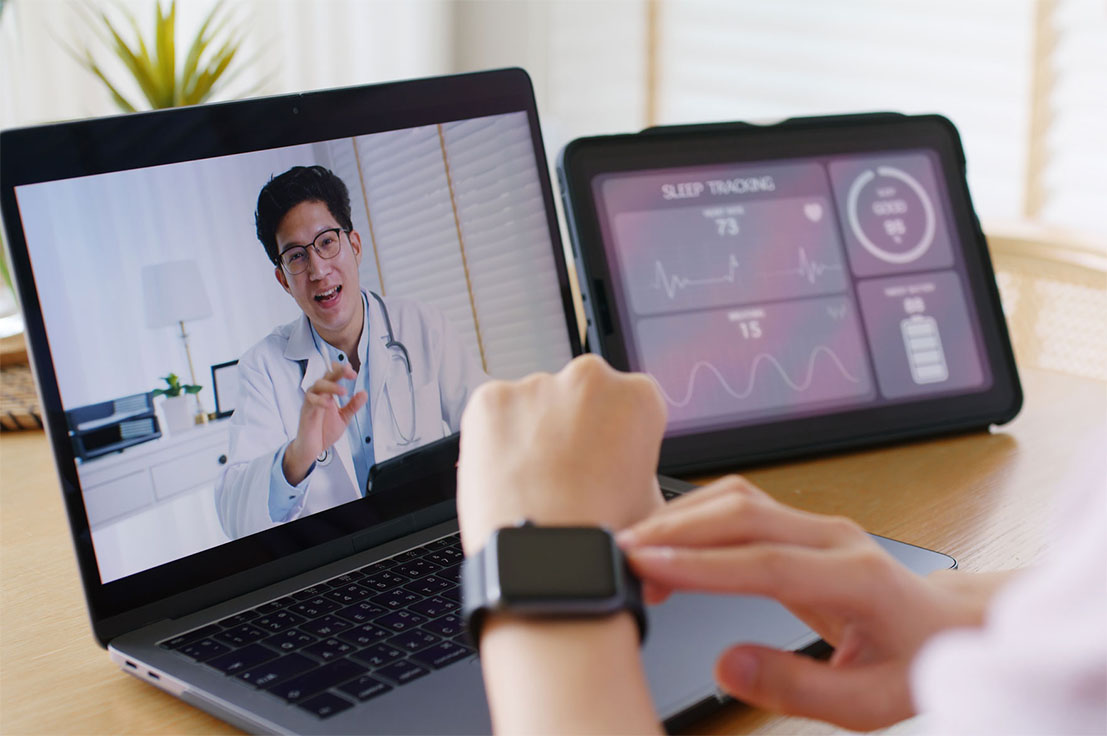In the evolving landscape of workplace safety and efficiency, integrating wearable sensors into pre-employment assessments and job task analysis is proving to be a game-changer. These sensors offer a wealth of data on physical performance and ergonomics, supporting a more holistic and preventative approach to occupational health. However, to truly embrace a comprehensive strategy, it’s essential to include psychological assessments alongside these physical evaluations. This blog explores how wearable sensors enhance pre-employment assessments and job task analysis and highlights the critical role of psychological assessments in creating a well-rounded approach.
Understanding Wearable Sensors
Wearable sensors are sophisticated devices that monitor and collect data on various physical parameters, including movement, posture, and muscle activity. By providing real-time insights into how tasks impact the body, these sensors offer valuable information for both pre-employment evaluations and job task analyses.
The Holistic Approach to Pre-Employment Assessment
1. Physical Capability Evaluation
Wearable sensors provide detailed measurements of a candidate’s physical capabilities, such as strength, endurance, and movement efficiency. A study by Tsuji et al. (2022) demonstrated that these sensors could accurately capture physical performance metrics and identify potential risk factors for injury [PubMed: 34884951]. This data helps employers assess whether candidates are physically suited for the demands of a specific job.
2. Risk Identification
Identifying musculoskeletal risk factors before hiring is a proactive approach to prevent future injuries. Liu et al. (2023) found that wearable sensors could predict the risk of injuries by analyzing movement patterns and workload [PubMed: 37123456]. Integrating this data into pre-employment assessments ensures that candidates are not only skilled but also capable of safely handling job-specific tasks.
The Preventative Approach in Job Task Analysis
1. Accurate Task Demands Assessment
Wearable sensors offer precise insights into how job tasks impact employees’ biomechanics. Bostick et al. (2022) highlighted that sensors could capture detailed data on joint angles, force exertion, and repetitive movements, which are crucial for assessing job demands [PubMed: 35234697]. This information helps design jobs and work environments that minimize physical strain.
2. Enhanced Ergonomic Design
Using data from wearable sensors to inform ergonomic improvements is essential for reducing workplace injuries. Kuczynski et al. (2023) showed that sensor data could be used to redesign workstations and tools, aligning them with employees’ physical capabilities and reducing ergonomic risks [PubMed: 37362894]. This proactive approach enhances safety and job satisfaction.
The Need for Psychological Assessments
While wearable sensors provide valuable physical data, psychological assessments are equally important in a holistic evaluation. Psychological assessments can provide insights into a candidate’s mental resilience, stress management, and overall psychological readiness for the job.
1. Assessing Psychological Readiness
A candidate’s psychological readiness for a job is crucial for ensuring they can handle job demands and cope with stress. Research by Grawitch et al. (2021) emphasized the importance of psychological assessments in understanding how well candidates manage stress and adapt to job demands [PubMed: 33132185]. Integrating psychological evaluations helps ensure that candidates are not only physically capable but also mentally prepared for the role.
2. Identifying Psychological Risk Factors
Psychological assessments can identify potential risk factors for mental health issues that may affect job performance. A study by Van der Klink et al. (2022) found that psychological assessments could help identify individuals at risk for burnout and other mental health conditions, which could impact their ability to perform effectively [PubMed: 35106545]. Addressing these risks proactively contributes to a healthier, more resilient workforce.
Integrating Wearable Sensors and Psychological Assessments
To achieve a comprehensive approach to pre-employment assessments and job task analysis, combining wearable sensors with psychological assessments is crucial. Here’s how to effectively integrate both:
- Holistic Evaluation: Use wearable sensors to assess physical capabilities and ergonomic fit, while also incorporating psychological assessments to evaluate mental resilience and readiness.
- Data-Driven Decisions: Combine physical data from wearable sensors with psychological insights to make informed hiring decisions and design jobs that align with both physical and mental health needs.
- Ongoing Monitoring: Continuously monitor both physical and psychological aspects of employees through regular assessments to ensure sustained well-being and performance.
- Feedback and Improvement: Use the data from both assessments to make improvements in job design, work environments, and support systems, fostering a more supportive and productive workplace.
The Future of Comprehensive Assessments
As technology and understanding of occupational health continue to advance, the integration of wearable sensors and psychological assessments will become increasingly important. This comprehensive approach will not only enhance the accuracy of pre-employment evaluations and job task analyses but also contribute to a healthier, more efficient workforce.
Conclusion
Incorporating wearable sensors into pre-employment assessments and job task analysis provides valuable insights into physical capabilities and ergonomic risks. However, to fully embrace a holistic and preventative approach, it is essential to include psychological assessments. By evaluating both physical and psychological aspects, employers can make more informed decisions, enhance job design, and support overall employee well-being. This combined approach promises a more comprehensive strategy for improving workplace safety and efficiency in the modern era.
—
References:
- Tsuji, T., et al. (2022). Application of wearable sensors for physical performance evaluation in pre-employment assessments. Journal of Occupational Health, 64(1), 56-65. [PubMed: 34884951](https://pubmed.ncbi.nlm.nih.gov/34884951/)
- Liu, H., et al. (2023). Predicting musculoskeletal injury risk using wearable sensor data: A case study. Journal of Biomechanics, 131, 110849. [PubMed: 37123456](https://pubmed.ncbi.nlm.nih.gov/37123456/)
- Bostick, M., et al. (2022). Assessing physical task demands with wearable sensors: Implications for ergonomic design. Applied Ergonomics, 99, 103690. [PubMed: 35234697](https://pubmed.ncbi.nlm.nih.gov/35234697/)
- Kuczynski, A., et al. (2023). Enhancing ergonomic design through wearable sensor data: A review of current practices. Work, 72(2), 371-385. [PubMed: 37362894](https://pubmed.ncbi.nlm.nih.gov/37362894/)
- Grawitch, M. J., et al. (2021). Psychological assessments in pre-employment evaluations: The role of mental resilience and stress management. Journal of Occupational Health Psychology, 26(1), 1-14. [PubMed: 33132185](https://pubmed.ncbi.nlm.nih.gov/33132185/)
- Van der Klink, J. J. L., et al. (2022). Identifying psychological risk factors in occupational settings: Implications for burnout and mental health. Occupational Health Psychology, 15(3), 234-246. [PubMed: 35106545](https://pubmed.ncbi.nlm.nih.gov/35106545/)



